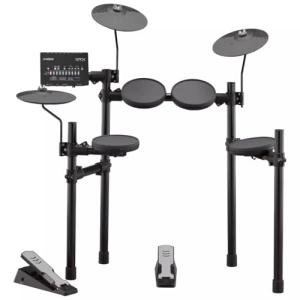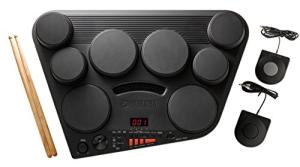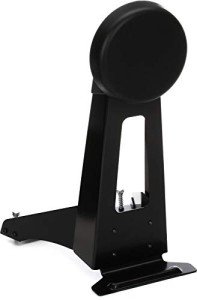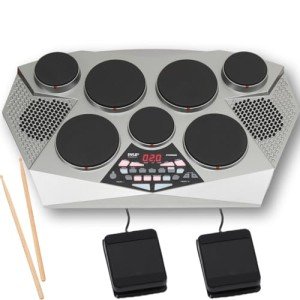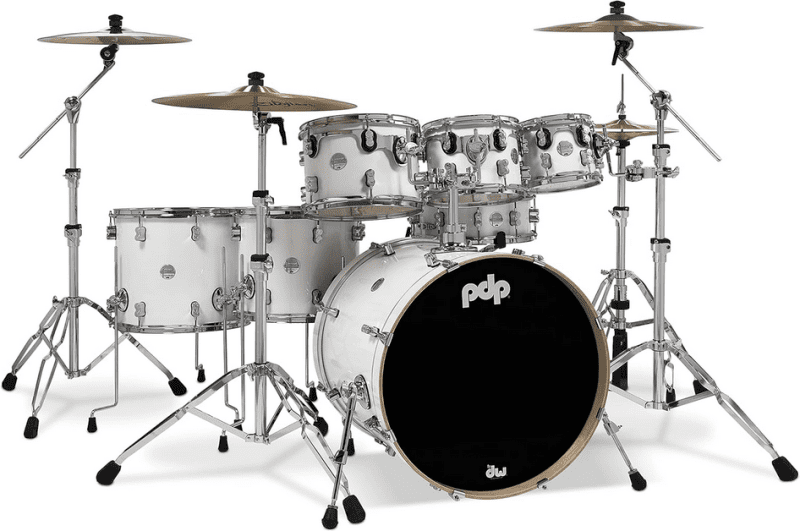Drumming is not only about hitting the right beats at the right time; it's a language, a form of expression that requires a profound understanding of rhythm. To truly excel in drumming, it's crucial to develop a sensitivity to rhythmic nuances. This skill will allow you to add depth, texture, and musicality to your performances, making you stand out as a drummer.
One way to develop your sensitivity to rhythmic nuances is by actively listening to various styles of music. Expand your musical horizons by exploring different genres such as jazz, funk, Latin, or world music. Pay attention to the intricate rhythms and syncopated patterns that are present in these genres. Immerse yourself in the music, and let it guide you in discovering new rhythmic ideas that you can incorporate into your drumming repertoire.

Another effective technique is to practice with a metronome. While this may sound mundane, using a metronome is a fantastic way to refine your sense of timing and precision. Start with simple patterns, ensuring that your hits align perfectly with each click of the metronome. As you become more comfortable, challenge yourself by experimenting with different subdivisions and accents. This exercise will not only sharpen your rhythmic skills but also elevate your overall musicality.
Lastly, playing with other musicians is an invaluable experience for developing your rhythmic sensitivity. Collaborating with guitarists, bassists, and pianists will expose you to different rhythmic frameworks, helping you comprehend the interplay between various instruments. Pay careful attention to how your drumming interacts with the rest of the ensemble, looking for opportunities to complement and enhance the musical arrangement. This interaction will enhance your ability to respond to dynamic changes, adapt to different styles, and contribute to a cohesive musical performance.
Enhancing Your Ability to Detect Musical Tone
Whether you are a beginner or a seasoned drummer, improving your ability to detect musical tone can greatly enhance your overall musicality. Developing a keen ear for pitch and tone will not only help you stay in sync with your bandmates but also allow you to better express yourself through your drumming.
One effective way to enhance your musical perception is through active listening. Take the time to truly listen to the music you love, paying close attention to the different tones and pitches produced by various instruments. Focus on the drumming elements and try to distinguish the different tonal qualities of each drum or cymbal. Over time, your brain will become more adept at recognizing and discerning different musical tones.
Another valuable practice is to play along with a wide variety of music styles and genres. Experimenting with different genres exposes you to diverse tonalities, rhythms, and beats, ultimately training your ear to recognize and adapt to different musical contexts. Whether it's jazz, rock, or world music, challenge yourself to learn and reproduce the specific tonal nuances that make each genre unique.
Lastly, consider incorporating technology into your practice routine. There are numerous apps and software available that provide training exercises specifically designed to improve pitch detection and tonal perception. These tools often offer interactive exercises, allowing you to test your ability to recognize and reproduce different musical tones. Regularly practicing with these tools can significantly sharpen your musical sense and strengthen your ability to detect subtle tone variations.
Mastering the Art of Dynamic Drumming
Drumming is not just about keeping rhythm; it is an art form that requires precision, technique, and most importantly, musicality. To truly excel as a drummer, one must develop a keen ear for dynamics – the subtle variations in volume and intensity that bring a performance to life. Whether you're a beginner or an experienced drummer, honing your ability to play dynamically will elevate your drumming skills to a whole new level.
The first step in mastering dynamic drumming is understanding the importance of control. As drummers, our actions directly influence the energy and mood of a song. By practicing control over every stroke and hit, we can emphasize the softer passages and powerfully drive the crescendos. Start by practicing playing softly with finesse and gradually build up to louder, more energetic playing. This control will not only add depth to your drumming but also allow you to seamlessly blend with other musicians in an ensemble.
Another crucial aspect of dynamic drumming is listening. Drummers often focus solely on their own playing, neglecting the surrounding music. By actively listening to the melodies, harmonies, and rhythms created by their fellow musicians, drummers can find opportunities to enhance the overall musicality. Experiment with fills and accents that complement the other instruments, creating moments of synergy that captivate the audience. Developing a musical ear will amplify your ability to adapt and respond to the changing dynamics within a piece of music.
Lastly, explore the vast world of dynamics available on your drum kit. The versatility of drumming instruments allows for a wide range of tonal possibilities. Experiment with changing the pressure and velocity of your strikes, utilizing different drumstick techniques, and taking advantage of the various subtleties each drum and cymbal offer. Familiarize yourself with various playing styles, such as ghost notes, open and closed hi-hat techniques, and rimshots, to add depth and nuance to your performances. The more you explore the sonic capabilities of your drum set, the more diverse and engaging your dynamic drumming will become.
Cultivating a Well-Tuned Musical Sensibility
Having a well-tuned musical sensibility is essential for any drummer looking to elevate their playing to new heights. It involves not only having a good sense of rhythm and timing but also a deep understanding of how to create and maintain a solid groove. Cultivating this musicality can take time and practice, but the results are well worth the effort.
One of the first steps in developing a well-tuned musical sensibility is to actively listen to a wide range of music. By exposing yourself to different genres and styles, you begin to develop an ear for various rhythmic patterns and techniques. Try focusing on the drums in songs you listen to, paying attention to how they interact with the other instruments and contribute to the overall sound. This will help you develop a sense of musicality and enable you to incorporate different elements into your own playing.
In addition to listening, it's important to play along with other musicians as often as possible. This could be in a band setting, jamming with friends, or even using backing tracks. When you play with others, you learn to listen and respond to different musical cues, which enhances your overall musicality. It also helps you develop a sense of timing and dynamics, as you navigate the ebb and flow of the music.
Lastly, don't underestimate the power of practice. While natural talent is certainly beneficial, it's consistent practice that truly allows you to cultivate a well-tuned musical sensibility. Set aside regular practice time to work on your technique, explore different rhythms, and experiment with various musical styles. As you dedicate time to honing your skills, you'll find that your musicality naturally improves.
